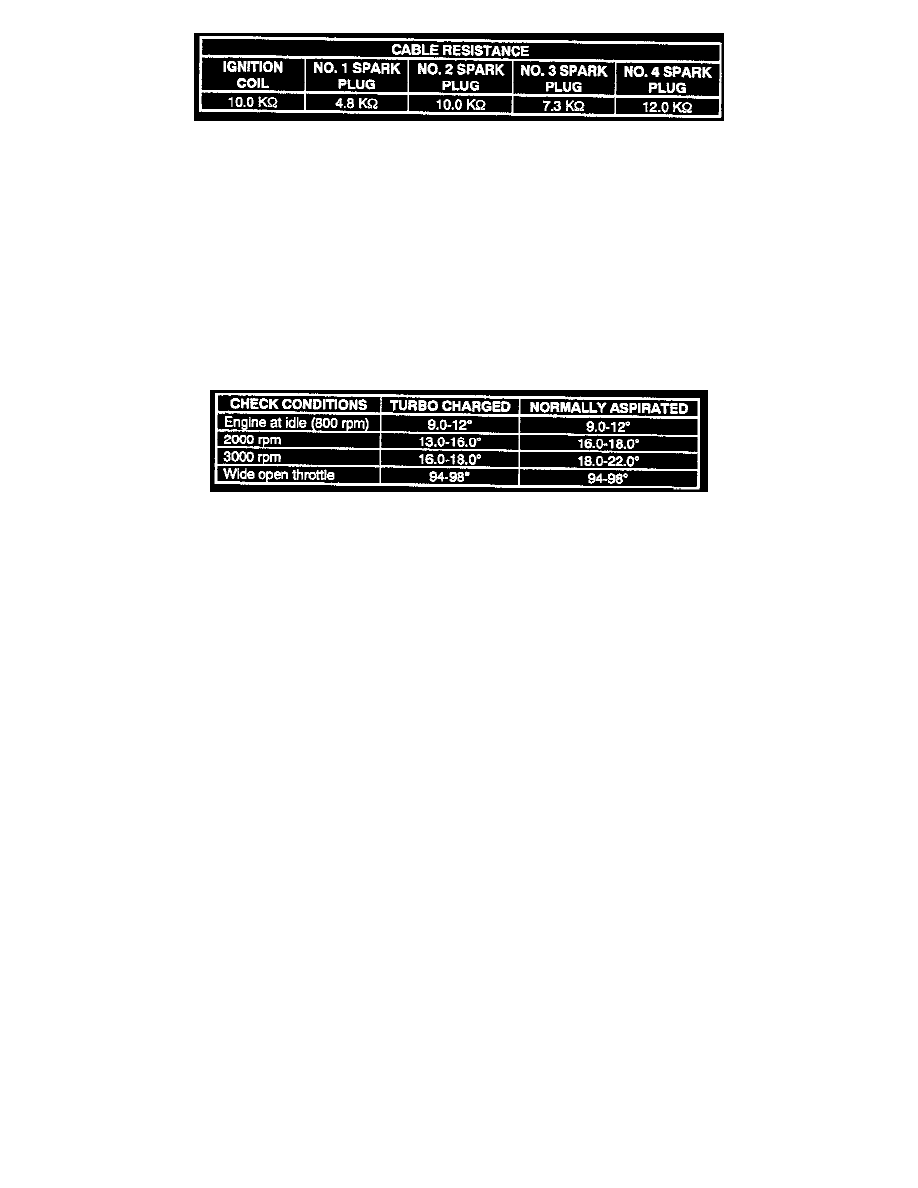Scoupe L4-1468cc 1.5L SOHC VIN J MFI (1994)

2.
Inspect the high tension leads from the ignition coil to the distributor cap and from the distributor cap to each spark plug, and check the resistance
of each lead.
3.
Replace the cable set if there is any signs of cracking, corrosion or wear due to contact with another engine component
4.
Make certain there is sufficient space between all the cables to eliminate the effects of electro-magnetic fields (EMF) generated by each cable on
the adjacent cables. Move any cables a minimum of 2 inches away from the engine wiring harness.
5.
Inspect the distributor cap and rotor for excessive wear, pitting or corrosion.
6.
Check the timing and verify that it's steady. If it is not steady, this may indicate a poor connection of the throttle position (TP) sensor connector or
knock sensor malfunction. See Throttle Position (TP) Sensor below or Knock Sensor for diagnosis.
THROTTLE POSITION (TP) SENSOR
Use the MUT tester to view service data information of the throttle position (TP) sensor (item No.23) and verify the readings are within specification.
If the values are erratic, try the following:
1.
Clean and tighten the female pins of the TP sensor
2.
Apply a light coat of dielectric grease* to the pins
3.
Fasten the connector to the TP sensor and make certain the connection is secure.
4.
Recheck the data.
If the data remains out of specification, perform the component inspection procedures for the throttle position sensor described in section 31 of the shop
manual.
* Dielectric grease prevents corrosion and allows the passage at electromagnetic fields but does not conduct the current.
ENGINE COOLANT TEMPERATURE (ECT) SENSOR
Use the MUT tester to view service data information of the engine coolant temperature (ECT) sensor (item No. 24) and verify the readings are within
specification (MUT data should correspond with actual engine coolant temperature.)
If the values are erratic, try the following:
1.
Clean and tighten the female pins of the ECT sensor
2.
Apply a light coat of dielectric grease to the pins
3.
Secure connector to the ECT sensor
4.
Re-check the data.
If the data remains out of specification or is erratic, perform the component inspection procedures for the engine coolant temperature sensor described in
section 31 of the shop manual.
GROUNDS
